Manicure Alert! How to Remove Nail Polish from Clothes (Without a Trace)
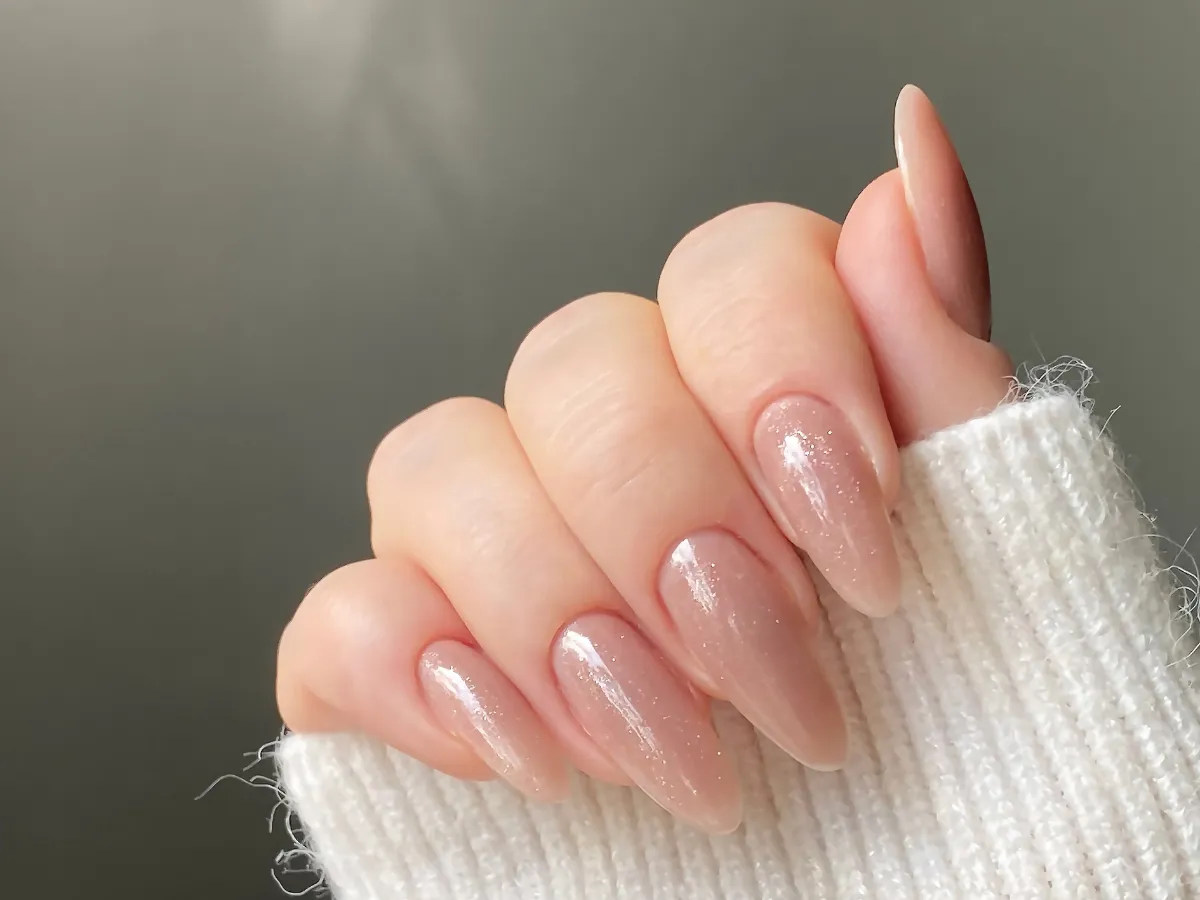
You're adding that final touch of color to your nails and, in an unfortunate move, the nail polish bottle tips over onto your favorite pants or that brand-new blouse. Panic! Nail polish stains are feared for their intense color and ability to dry quickly, creating a hard film bonded to the fabric. But before giving the garment up for lost, take a deep breath. Knowing how to remove nail polish from clothes is possible if you act quickly and use the right method.
Whether it's traditional polish, gel polish, with or without acetone, this comprehensive guide will show you the most effective techniques to dissolve and eliminate those nail lacquer stains, protecting your fabrics as much as possible.
Why Is Nail Polish So Hard to Remove?
Nail polish is designed to be durable and resistant on a hard surface like a nail. Its composition includes:
- Film Formers (Resins): Like nitrocellulose, which create a hard, shiny layer upon drying.
- Solvents: Such as ethyl acetate, butyl acetate (and sometimes acetone) that keep the polish liquid in the bottle but evaporate quickly in the air, hardening the lacquer.
- Pigments and Dyes: Provide intense color and can stain textile fibers.
- Plasticizers: Give flexibility to the dried film.
This combination means that once dry, the polish forms an adherent plastic layer that repels water and whose pigments can penetrate the fabric. That's why we need specific solvents to break down that film.
Golden Rules Before Tackling the Stain
Before applying any product, follow these essential guidelines:
- Act FAST!: The longer it sits, the more the oils and pigments will set.
- Scrape, Don't Spread: If there's a thick blob of polish, use the edge of a card, spoon, or dull knife to CAREFULLY lift the solid excess. Avoid crushing or spreading it. If it's starting to dry, it's better not to touch it much to avoid breaking it into dispersible pieces.
- NO RUBBING!: The cardinal sin. Rubbing only embeds the stain deeper and makes it larger. The key technique is "dabbing" or "blotting."
- Protect Underneath: Always place a clean white cloth or absorbent paper towel under the stained area so the polish and solvent transfer to it, not to another part of the garment.
- Test First: Any product you use (alcohol, vinegar, stain remover...), test it first on an inner seam or hem to ensure it doesn't damage the color or fabric.
- Check the Label: Always check if the garment requires special care (dry cleaning, hand wash, etc.) according to the wash labels.
- Start with Cold/Lukewarm Water: Heat can set the greasy components and pigments.
The Main Weapon: Acetone (Use with Caution!)
Acetone is the go-to solvent for nail polish and the most effective method in many cases, but BEWARE! It's not suitable for all fabrics.
- When to Use?: Primarily on durable natural fabrics like cotton, linen, hemp (preferably white or colorfast and tested).
- DANGER! When NOT to Use?:NEVER on acetate or triacetate fibers (common in linings, some artificial silks, shiny garments). Acetone literally dissolves these fibers, leaving a hole or a hardened, deformed area. It's also not recommended on rayon (viscose), modal, lyocell, natural silk, or wool without thorough testing, as it can damage or discolor them. Always read the composition label.
- MANDATORY Compatibility Test: Apply a drop of acetone with a cotton swab to an inner seam or hem. Wait a minute. If the fabric doesn't change color, deform, or dissolve, you can proceed cautiously.
- How to Apply:
- Ensure protection underneath the stain.
- Moisten a cotton ball or clean white cloth with acetone (acetone-based nail polish remover). Don't oversaturate.
- Gently dab the stain with the moistened cotton, working from the edges inward. Do not rub hard.
- You'll see the polish dissolve and transfer to the cotton and the cloth below. Change the cotton and the area of the underlying cloth frequently to avoid re-staining.
- Continue until the stain disappears.
- Ventilation: Work in a well-ventilated area; acetone is volatile and has a strong odor.
- Wash Afterwards: Once the stain is removed, rinse the area with cold water and wash the entire garment immediately as usual to remove any acetone residue.
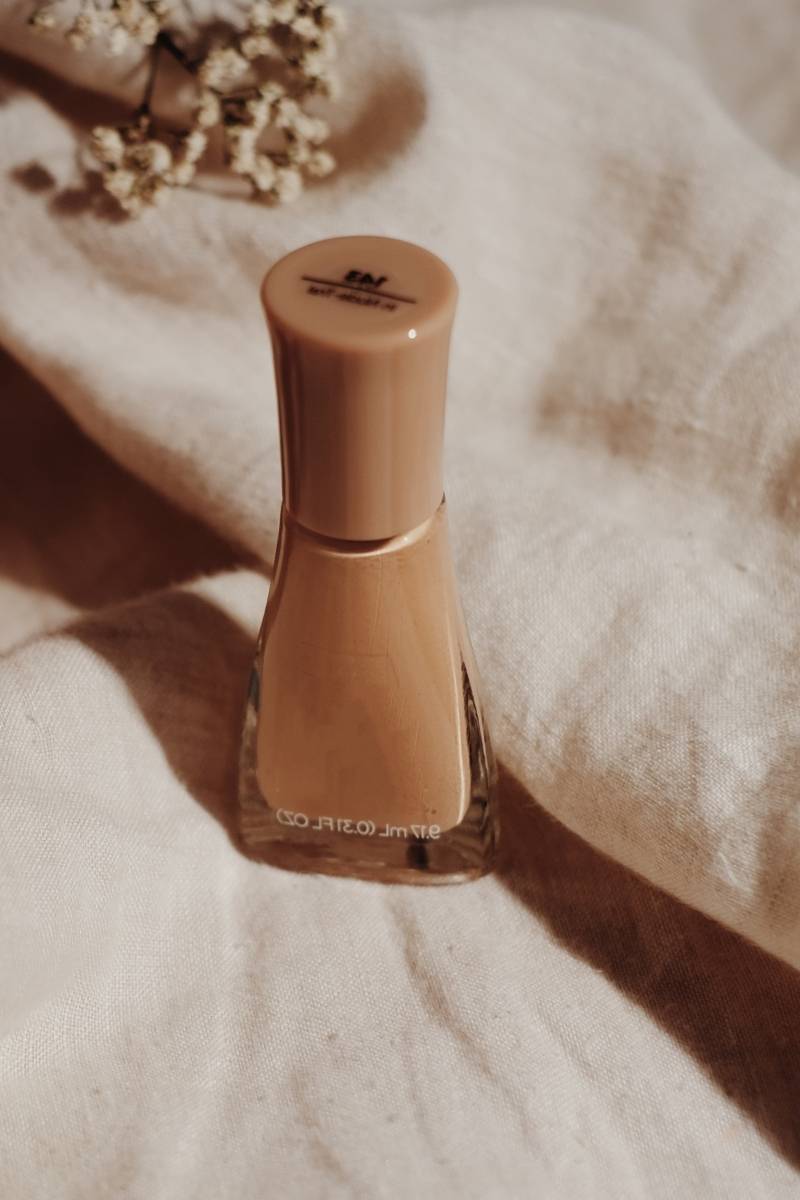
Acetone Alternatives: Safer but Equally Effective?
If your garment contains acetate or is delicate, you need other options.
1. Acetone-Free Nail Polish Remover
The most direct commercial alternative. They usually contain other solvents like ethyl acetate or methyl acetate.
- Advantage: Much safer for synthetic and delicate fibers than acetone.
- Disadvantage: May be less potent and require more time and applications to dissolve the polish, especially if dry.
- Application: Same as with acetone (protection underneath, dabbing with cotton, changing cotton...).
- Test First!: Although safer, testing on a hidden area is still recommended, just in case.
2. Isopropyl Alcohol (Rubbing Alcohol)
Less aggressive than acetone, it might work on some stains, especially recent ones.
- Application: Same dabbing technique with cotton.
- Effectiveness: Variable. May require more persistence.
- Caution: Also requires pre-testing for colorfastness.
3. Hairspray (with Alcohol)
As with other stains, hairspray can help if it contains alcohol.
- Application (If You Try): Spray directly onto the stain (with protection underneath).
- Action: Let sit for a few seconds/minutes. Try blotting with a clean cloth or gently brushing with an old toothbrush.
- Limitations: Limited effectiveness, especially on dried stains. May leave its own residue. You'll need to wash afterward.
4. Hand Sanitizer / Disinfectant Wipes (with Alcohol)
Similar to isopropyl alcohol, the alcohol content can help dissolve.
- Application: Apply the gel or gently rub with the wipe over the stain.
- Effectiveness: Low-medium, best on fresh, small stains.
5. Hydrogen Peroxide (Whites Only!)
Doesn't dissolve polish but can help remove residual *pigment* on white clothes after you've removed the lacquer with another method.
- Use: After using acetone/alcohol, if a color shadow remains on white clothes, apply 3% hydrogen peroxide, let sit a few minutes, rinse, and wash.
Remember hydrogen peroxide is a bleach. Learn more about restoring whiteness to clothes.
Dried Nail Polish Stains: The Ultimate Challenge
If the polish is completely hard, the task becomes more difficult.
- Scrape Carefully: Try to lift or break the dried polish layer with a spatula, dull knife edge, or even your fingernail, being very careful not to snag or tear the fabric. Remove all loose bits.
- Apply Appropriate Solvent (Patiently): Choose acetone (if fabric allows) or non-acetone remover. Apply with a cotton ball to the remaining stain, dabbing and letting the solvent sit a bit longer to penetrate the dried lacquer.
- Repeat, Repeat, Repeat: You'll need to change the cotton ball many times and be persistent. Dissolving a dried stain can take time.
- Gentle Brushing (Optional): Between solvent applications, you can try very gently rubbing with an old toothbrush to help loosen dissolved particles.
- Wash When Finished: When no more residue is visible, wash the garment.
Dried stains on delicate fabrics are extremely difficult, and professional dry cleaning is often the best approach.
What About Gel or Semipermanent Polish?
These types of polish are designed to be even more durable and cure under UV/LED light. Removing a stain from these products from clothing is extremely difficult, even for professionals. Pure acetone (if the fabric can withstand it) applied for a longer time is the only home option with any (low) chance of success. Taking the garment to a dry cleaner as soon as possible, explaining the type of polish, is highly recommended.
Frequently Asked Questions about Removing Nail Polish
How to remove nail polish stains from clothes?
Scrape excess (if dry), protect underneath, test solvent (acetone or non-acetone) in hidden area, apply with cotton by dabbing, wash.
How to remove dried nail polish from clothes?
Scrape well, apply appropriate solvent (acetone/non-acetone) patiently with repeated dabbing, wash.
How do you remove nail polish without acetone?
With commercial 'acetone-free' removers, isopropyl alcohol, or hairspray/sanitizer with alcohol (less effective).
How to remove nail polish from clothes without acetone or baking soda?
Use non-acetone remover, isopropyl alcohol, or hairspray/perfume with alcohol. Baking soda is ineffective at dissolving polish.
A nail polish accident doesn't have to be the end of the world for your clothes! By acting quickly, choosing the right solvent for the fabric, and applying the dabbing technique patiently, you can remove most enamel stains. And always remember to test compatibility first!
Impossible Stain or Delicate Garment? We Can Advise!
Nail polish stains, especially dried ones or on delicate fabrics like silk, can be a real challenge. If you're unsure how to proceed or prefer not to risk it, remember that at LaColada Self-Service Laundry Ponferrada, while we don't treat specific stains, we can offer advice or recommend professional dry cleaning services that can help with those difficult cases. Consult with us!
Visit LaColada and Ask UsOther Tough Stains and Solutions
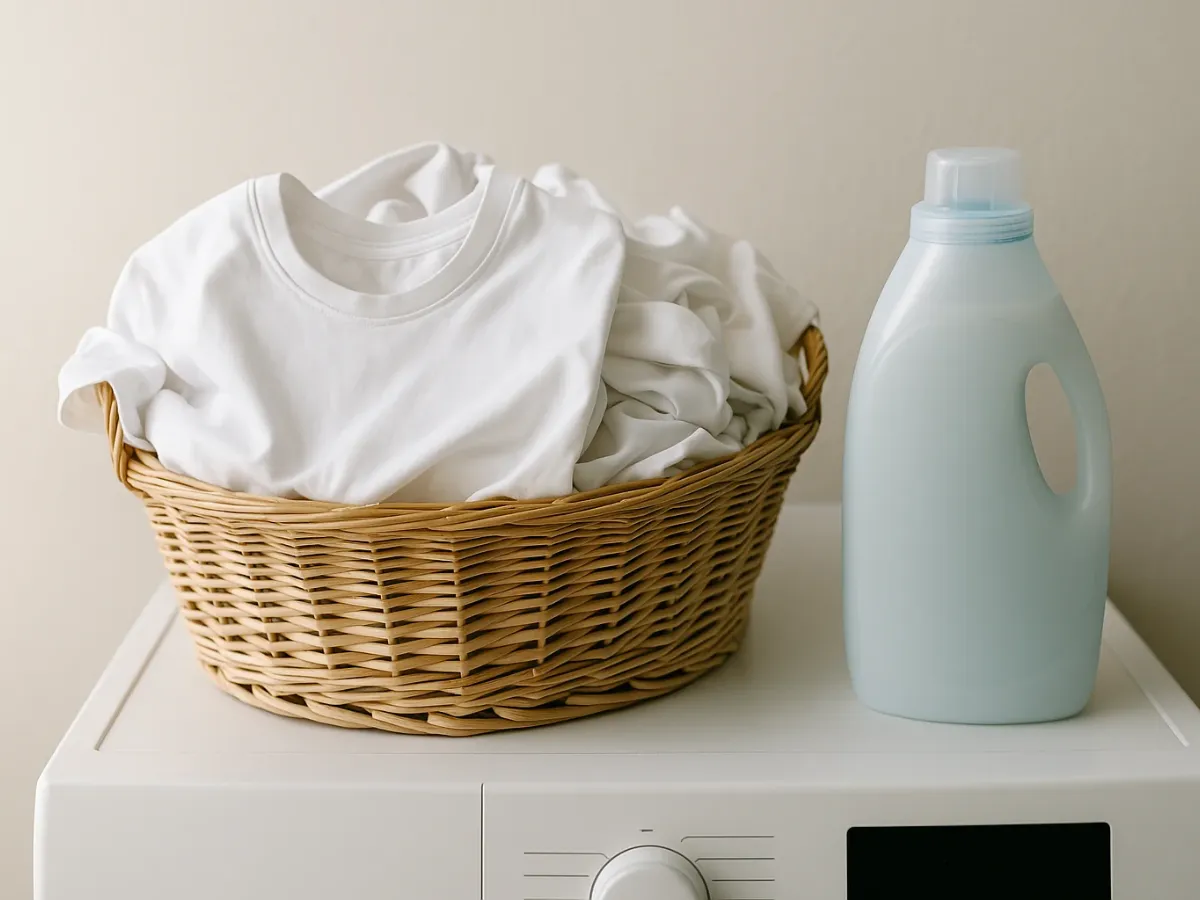
How to Restore Lost Whiteness to Clothes
Bring back the original whiteness to your yellowed or dingy garments.
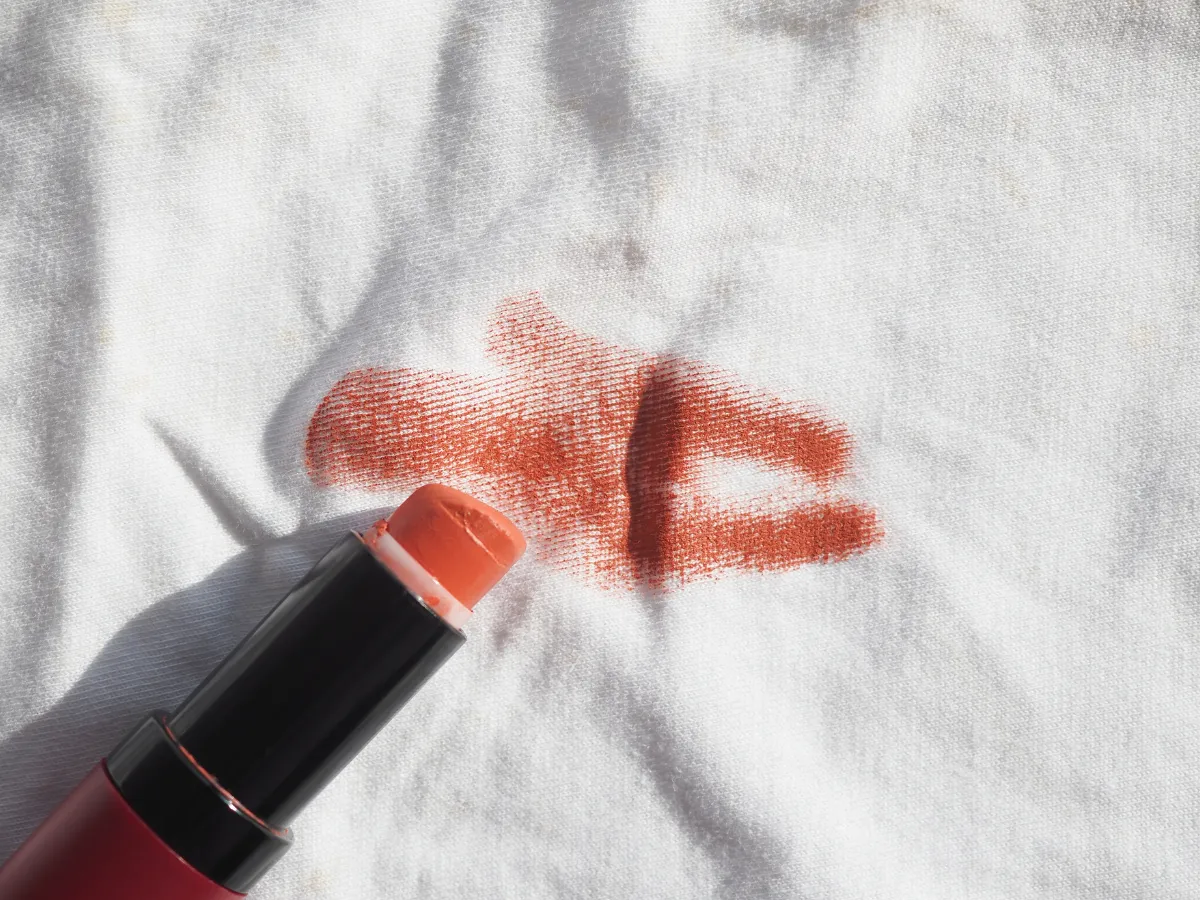
How to Remove Lipstick from Clothes Without Damaging Fabric
Effectively remove lipstick stains.
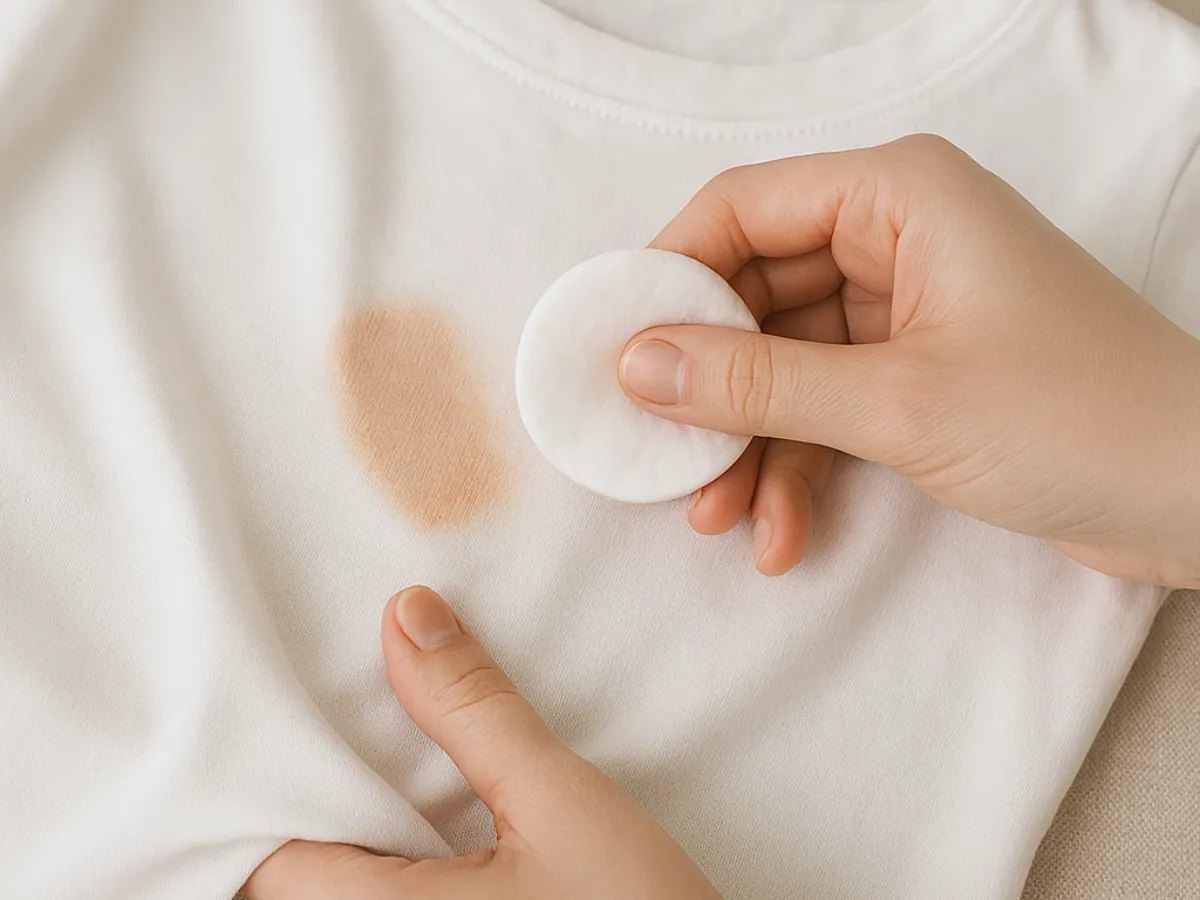
Removing Makeup Stains from Clothes
Solutions for removing foundation, lipstick, or mascara residue.